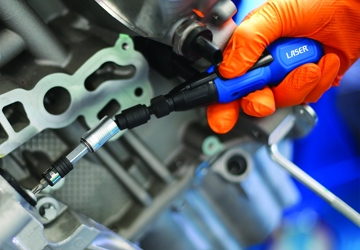

Tappex was recently approached by a customer to modify its Hi-Mould moulded in insert to meet an application requirement – an internal explosion.
An existing moulded in insert had been trialled where a plastic enclosure was required to withstand an internal explosion. The existing insert came close to meeting the requirements but during the various test cycles one insert had failed. Thread forming screws had been trialled with some success but industry standards for the application meant that they could not be used. Tappex was therefore approached to develop a solution.
Unfortunately, the space surrounding the insert was restricted so a simple increase in length was not possible as a means of increasing the resistance to pull out. After discussions with the customer, two variants of the existing insert were tested with larger diameters and undercut forms without success.
In an attempt to give some direction to the project, a range of inserts of different types were moulded in and then tested. As a means of comparing the inserts, a simple jack out test was devised where torque was applied to the unsupported insert. The torque at which the insert failed was then recorded.
Results showed that the oversize self-tapping style insert with no cutting features offered the greatest performance gain in pull out. To maximise the benefit of the enhanced pull out performance whilst retaining an acceptable level of rotational performance a combination of features of a self-tapping insert and mould in insert were designed and samples made for testing at the customer.
The special bespoke design of this thread insert exceeded the customer’s required performance. Prior to production the design was also tweaked to increase the bolt engagement length by 1mm. This ensured that the bolt could be tightened without any risk of bottoming in the insert.
Tappex Thread Inserts has a wide range of standard inserts that are in stock and meet the majority of customers performance and installation requirements. In some cases, the application specification can mean that a variant longer, shorter, with a special thread or other feature needs to be developed to satisfy the requirements. Alternatively, an entirely special part can be developed in conjunction with the customer and the needs of the application.

Having spent a decade in the fastener industry experiencing every facet – from steel mills, fastener manufacturers, wholesalers, distributors, as well as machinery builders and plating + coating companies, Claire has developed an in-depth knowledge of all things fasteners.
Alongside visiting numerous companies, exhibitions and conferences around the world, Claire has also interviewed high profile figures – focusing on key topics impacting the sector and making sure readers stay up to date with the latest developments within the industry.





